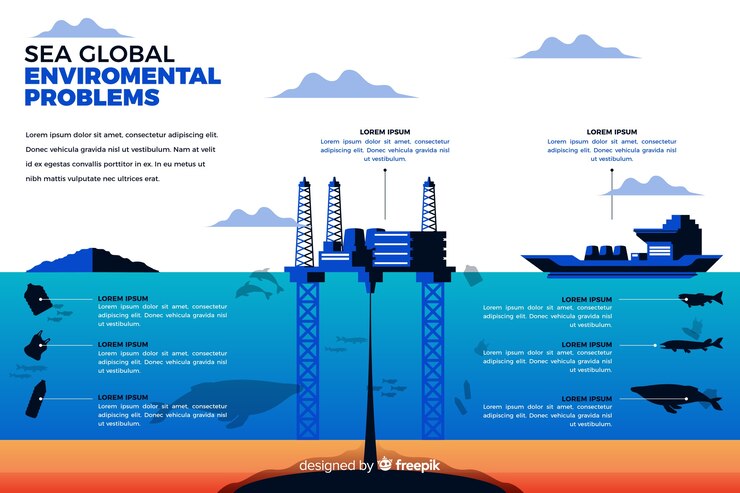
Deep offshore technology
Introduction to Deep Offshore Technology
The ocean covers over 70% of our planet, a vast realm teeming with resources yet to be fully explored. As technology advances, we find ourselves able to tap into the depths like never before. Deep offshore technology has emerged as a critical player in this quest for new energy sources and materials. It represents not just innovation but also ambition a drive to push beyond conventional limits.
Imagine colossal drilling rigs perched on the horizon, underwater robots navigating dark trenches, and state-of-the-art vessels equipped with cutting-edge tools. These advancements are transforming how we interact with marine environments while addressing global energy demands. However, venturing into these deep waters brings its own set of challenges.
Join us as we dive deeper into the world of deep offshore technology its advantages and obstacles, key components that make it possible, innovative techniques pushing boundaries today, safety protocols ensuring responsible exploration, and notable projects paving the way for future endeavors in this dynamic field. The journey promises insights that reveal both the potential and responsibility that comes with harnessing what lies beneath the waves.
Advantages and Challenges of Deep Offshore Operations
Deep offshore operations present a unique blend of opportunities and hurdles. The vastness of the ocean holds immense resources, particularly in oil and gas extraction. Accessing these resources can lead to significant economic benefits for companies and nations alike.
However, the challenges are formidable. The extreme depths create logistical nightmares. Harsh weather conditions can disrupt operations, leading to costly delays. Additionally, the complexity of underwater environments demands advanced technology.
Environmental concerns add another layer of difficulty. Oil spills or leaks pose risks not only to marine life but also to coastal communities dependent on healthy oceans. Regulatory scrutiny is increasing as public awareness grows about environmental preservation.
Balancing profitability with safety remains an ongoing struggle for operators in this sector. Innovations may provide solutions, but adapting existing infrastructures will require investment and commitment from industry leaders.
Key Components of Deep Offshore Technology
Deep offshore technology relies on several critical components that ensure successful operations far beneath the ocean’s surface. One of the most vital elements is subsea infrastructure, including pipelines and risers designed to transport resources safely.
Robust drilling systems are also essential. They must withstand high pressures and extreme temperatures while maintaining precision. Advanced robotics play a crucial role as well, allowing for remote operation in hazardous environments where human presence is limited.
Another key component is dynamic positioning systems. These technologies help vessels maintain their location above underwater targets, using GPS and thrusters to counteract ocean currents effectively.
Data acquisition tools provide real-time insights into operational conditions. This information aids in decision-making processes, enhancing overall efficiency. Together, these components form an intricate network that drives deep offshore technology forward.
Cutting-edge Technologies Used in Deep Offshore Operations
Deep offshore technology continues to evolve, driven by innovation and the need for efficiency. Subsea robotics play a crucial role in exploration and maintenance tasks. These autonomous vehicles can dive deep into the ocean, collecting data without human intervention.
Advanced sensors are another game-changer. They provide real-time monitoring of environmental conditions, ensuring safety while maximizing resource extraction.
Digital twins simulate physical assets in virtual environments. This technology allows companies to predict equipment failures before they occur, reducing downtime significantly.
Moreover, artificial intelligence enhances decision-making processes during operations. By analyzing vast amounts of data quickly, AI helps teams improve strategies and optimize performance.
Finally, 3D printing is emerging as a vital tool for manufacturing spare parts on-site. This reduces lead times and transportation costs associated with traditional supply chains in remote offshore locations.
Safety Measures and Environmental Impact Considerations
Safety is paramount in deep offshore technology. The harsh conditions require robust protocols to protect workers and assets. Regular training drills empower personnel to respond effectively during emergencies.
Environmental impact is another critical consideration. Operators must adhere to stringent regulations aimed at minimizing ecological footprints. This includes implementing spill response strategies and waste management practices designed for marine settings.
Monitoring systems play a vital role in ensuring compliance with environmental standards. Advanced sensors detect anomalies, allowing for immediate corrective actions.
Collaboration with environmental organizations fosters transparency and accountability. Stakeholders engage in dialogue about sustainable practices, ensuring the preservation of marine ecosystems while pursuing resource extraction.
Innovation also drives safety advancements within the industry. New technologies enhance real-time data analysis, leading to proactive measures that prevent accidents before they occur.
Case Studies of Successful Deep Offshore Projects
One notable case study is the Jubilee Field in Ghana. This project showcases the potential of deep offshore technology. It reached first oil in 2010, significantly boosting local economies and energy supply.
Another impressive example is Brazil’s pre-salt layer discoveries. The Tupi field, found in 2006, demonstrated how advanced drilling techniques can unlock massive reserves beneath thick salt layers. This innovation transformed Brazil into a key player in global oil production.
The Leviathan gas field off Israel’s coast represents a striking success as well. Situated around 1,600 meters underwater, it promises to provide energy security for the region while reducing dependence on imports.
Each of these projects highlights not only technological advancements but also strategic planning and collaboration among various stakeholders. Such examples inspire confidence in deep offshore operations’ viability and sustainability moving forward.
Future Possibilities and Innovations in the Field
The future of deep offshore technology is poised for remarkable advancements. Innovations in robotics and automation are transforming how operations are conducted underwater. Autonomous underwater vehicles (AUVs) can now perform inspections and maintenance with minimal human intervention.
Artificial intelligence is becoming integral to analyzing data collected from ocean depths. Machine learning algorithms enhance predictive analytics, allowing for better decision-making in real-time scenarios.
Sustainable practices also play a crucial role in future developments. The industry is focusing on minimizing environmental impact through green technologies like hybrid power systems. These systems utilize renewable energy sources alongside traditional fuels.
Moreover, enhanced materials engineering promises increased durability and efficiency of subsea structures. This could lead to longer lifespans for installations, reducing the need for frequent replacements or repairs.
As these technologies evolve, we may witness unprecedented exploration capabilities that push the boundaries of what’s possible in deep waters.
Conclusion
Deep offshore technology represents a fascinating intersection of innovation, engineering, and environmental stewardship. As the world increasingly turns to deeper waters for energy resources, understanding its intricacies becomes essential. The blend of advanced technologies and strategic planning not only enhances operational efficiency but also ensures safety and sustainability.
Looking ahead, there is immense potential for further advancements in this field. Emerging technologies promise to improve exploration methods while minimizing ecological impact. The ongoing development of automated systems can streamline operations deep underwater, making them safer and more efficient.
The journey into the depths is filled with challenges yet offers remarkable rewards. Through continued investment in research and collaboration across industries, the future of deep offshore technology holds exciting possibilities that may redefine how we harness marine resources responsibly.





